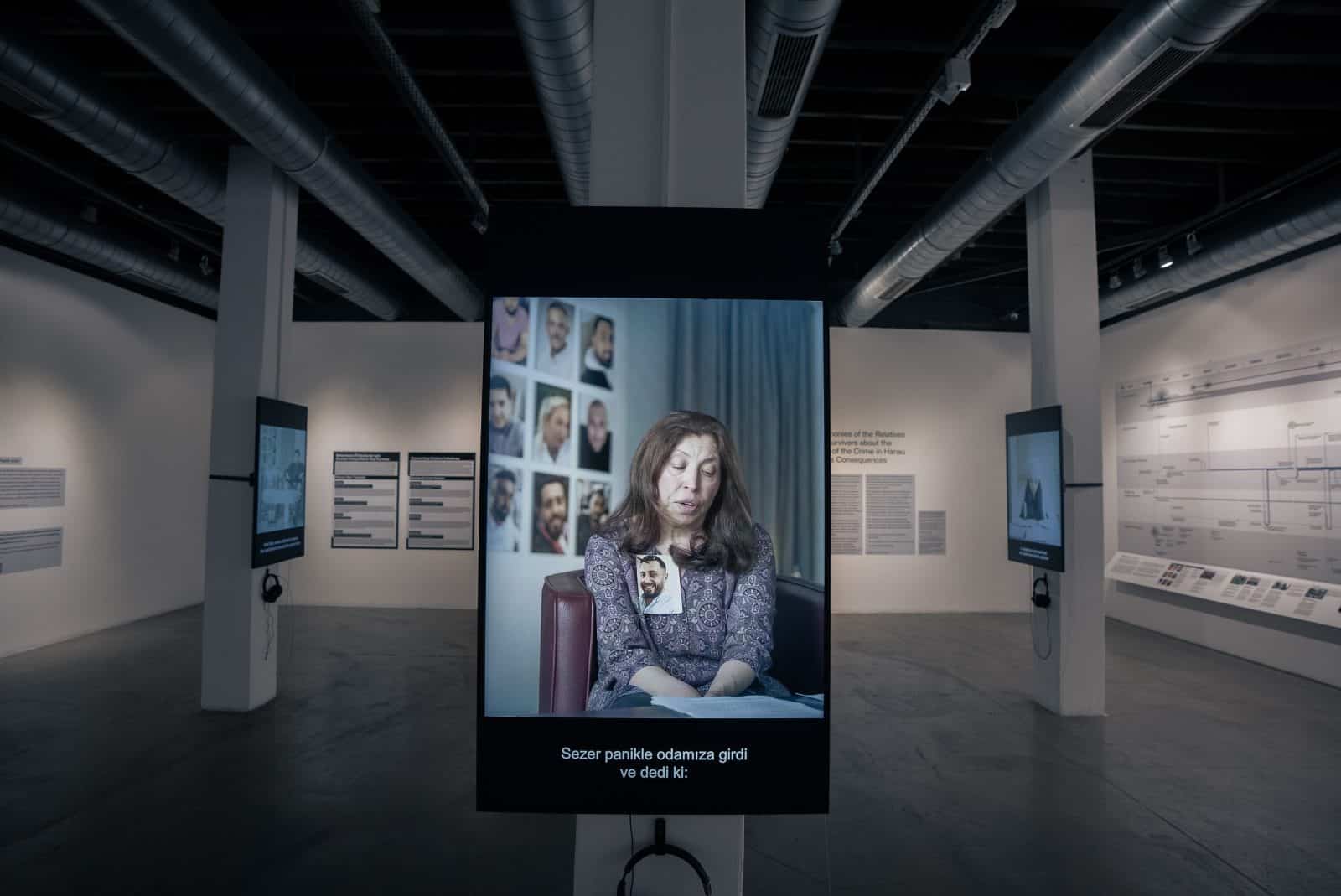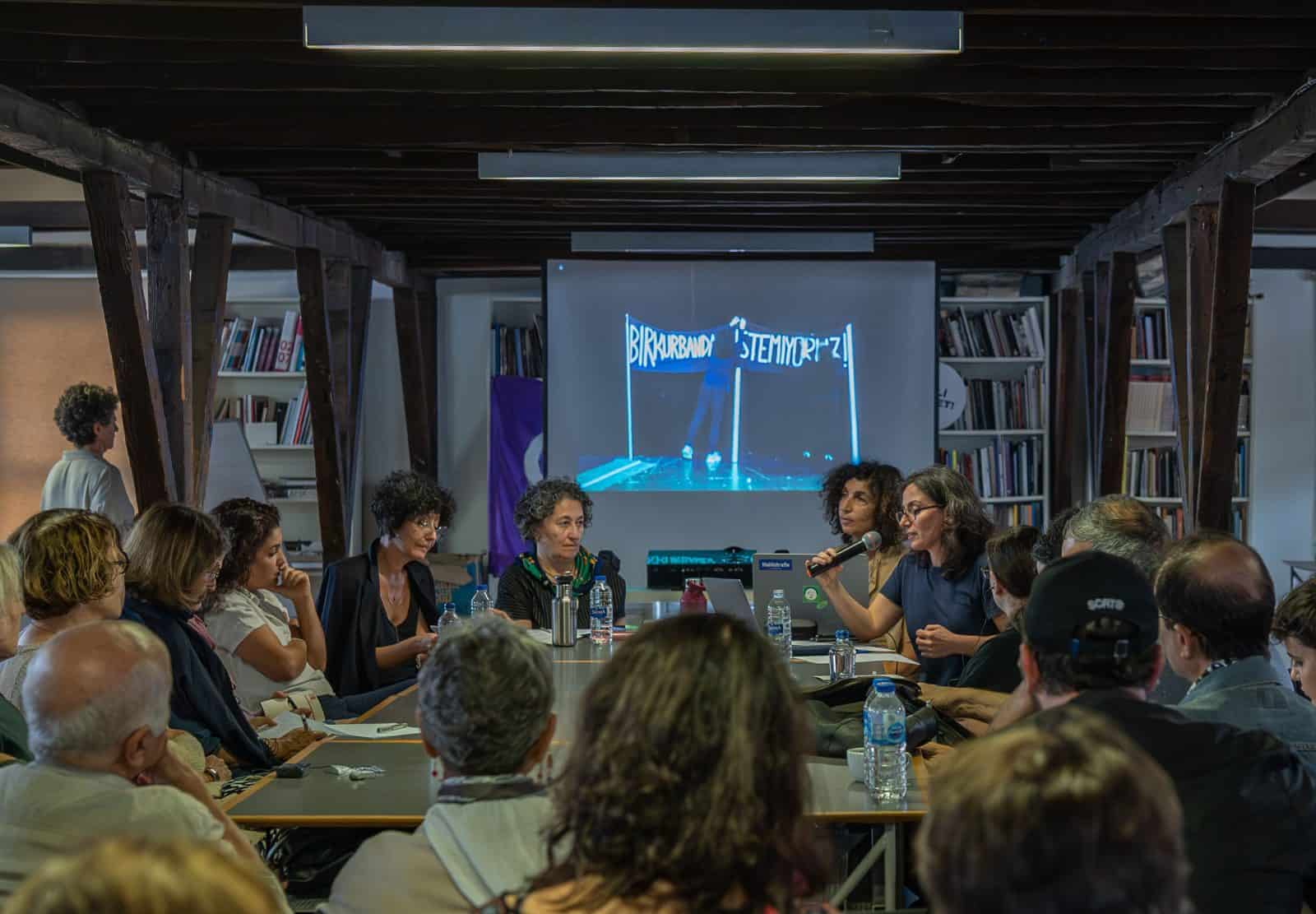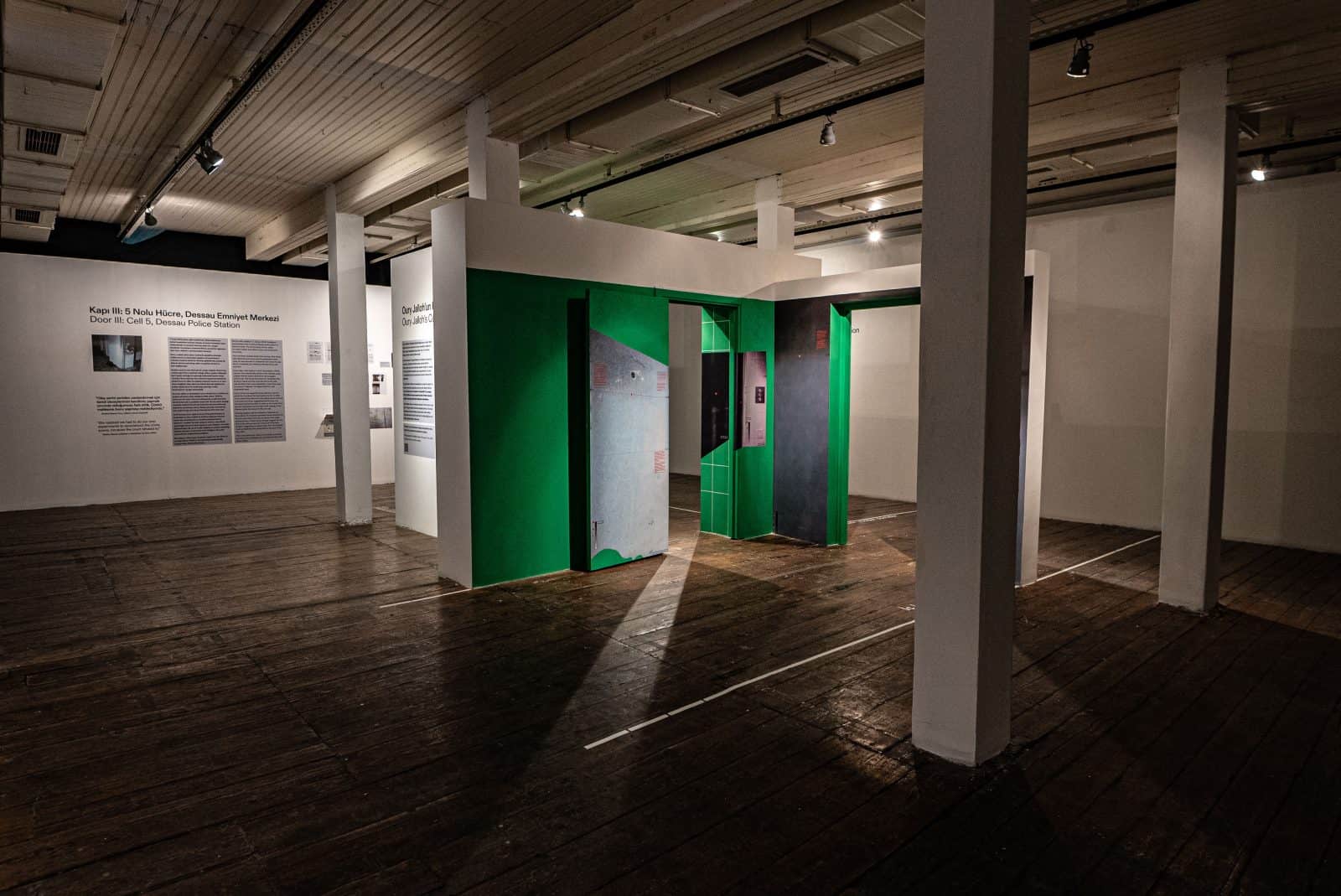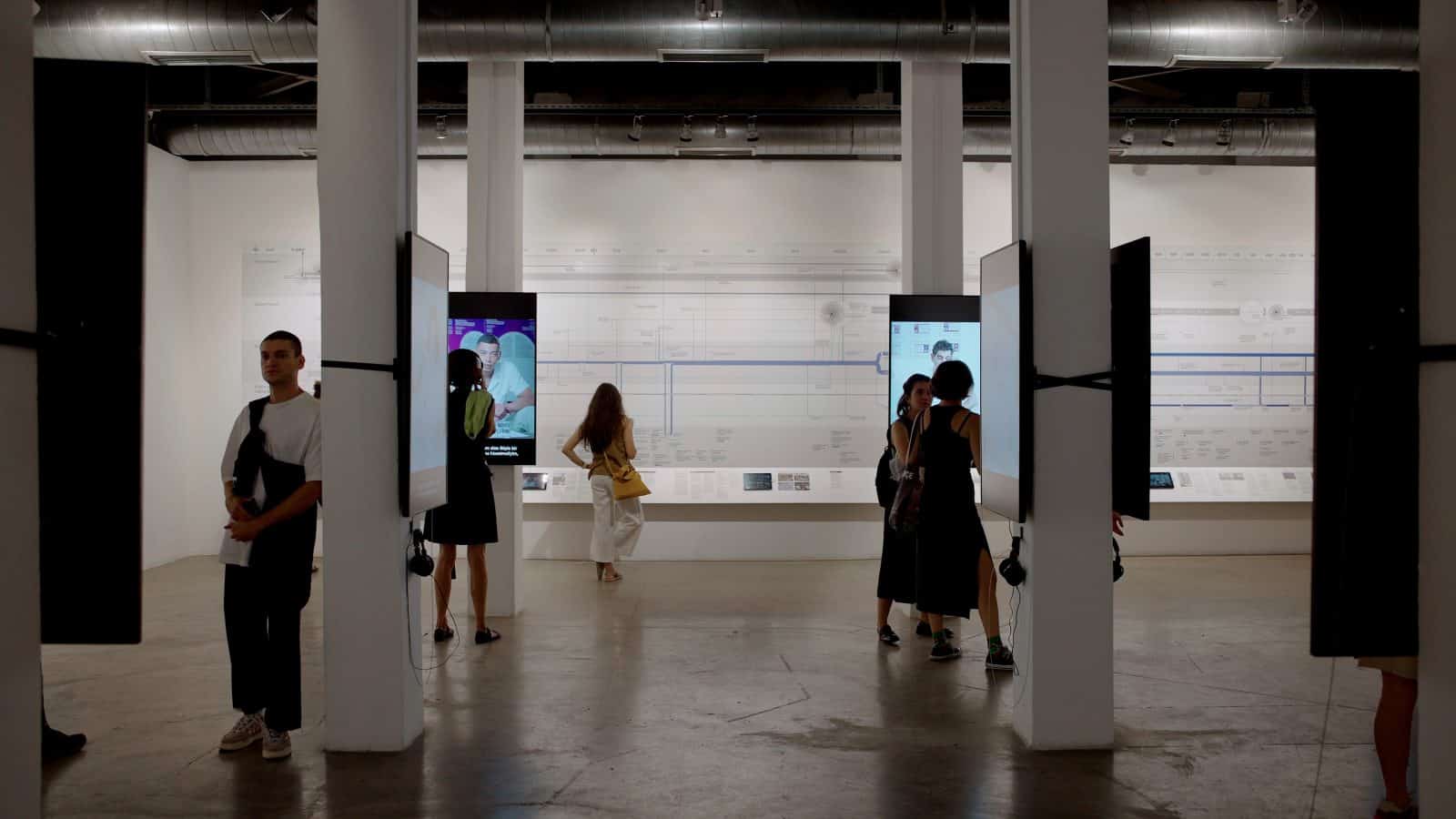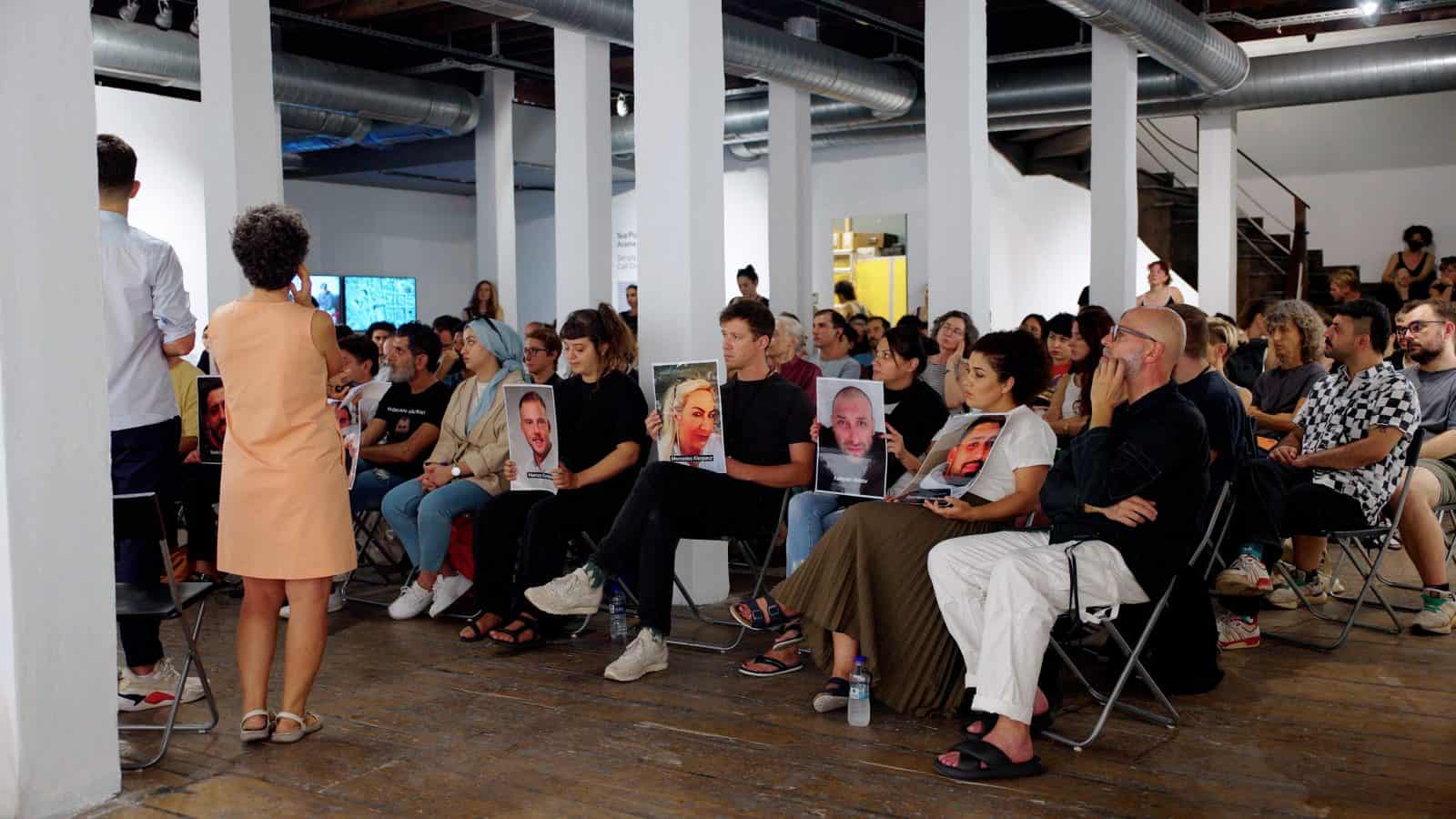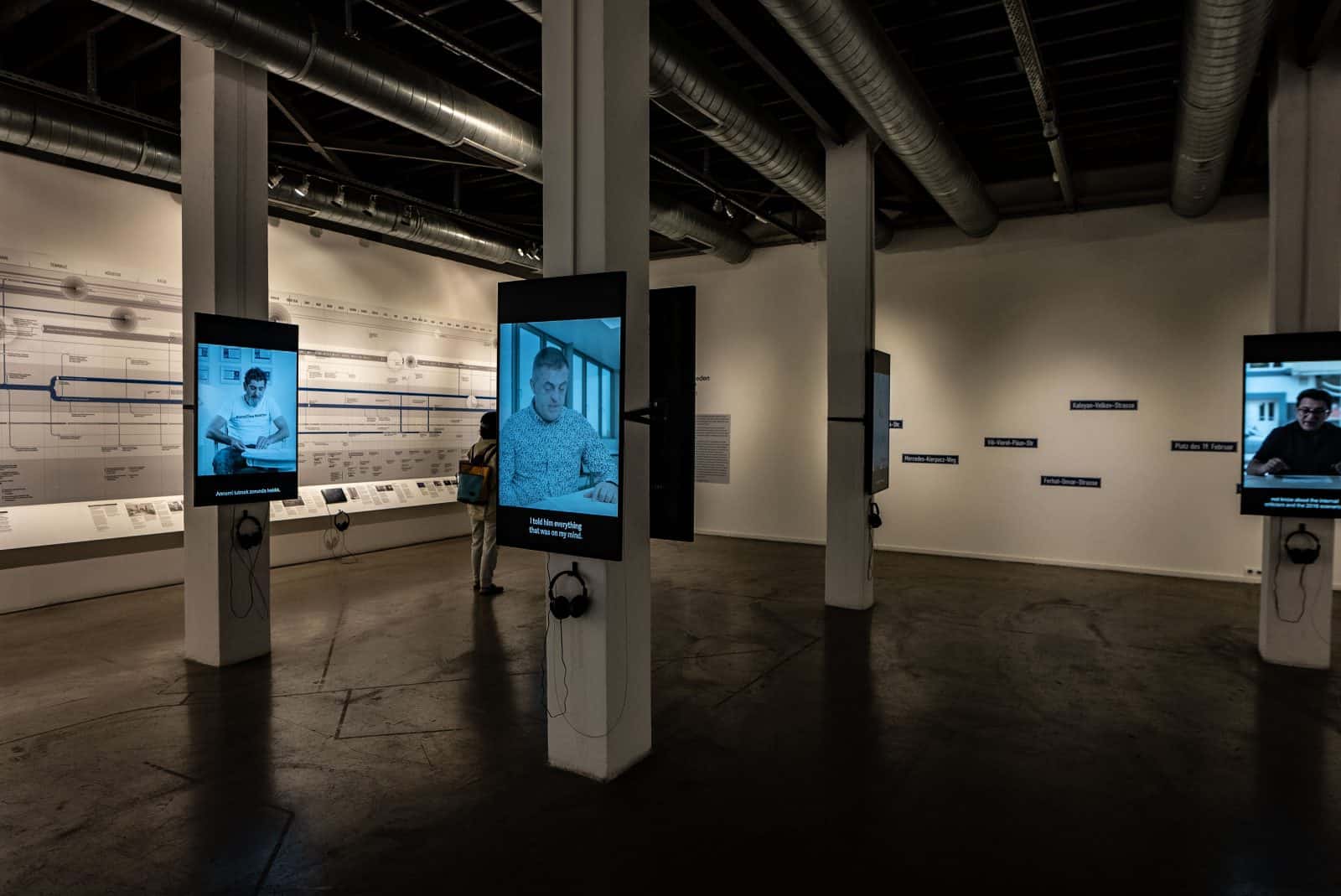Venue
Date
Exhibition Type
Installation views, ‘Three Doors / Üç Kapı’, DEPO Istanbul, 28 September–29 December 2024. Photos: © Hasan Huseyin Gunes / Goethe-Institut Istanbul
First shown at the Frankfurter Kunstverein in 2022, then at the Haus der Kulturen der Welt in Berlin (2022) and at the Neustädter Rathaus in Hanau (2023), Three Doors influenced political, public and media responses to the Hanau terrorist attack and the murder of Oury Jalloh, gave visibility to the ongoing struggles, and shed light on deeply rooted racist structures in Germany. This year the exhibition was shown at the Württembergischer Kunstverein Stuttgart and the Museum im Kulturspeicher Würzburg.
The exhibition is organised around three investigations, each of which relates to a door and an incident of racist violence in Germany. Doors that separate and connect different spheres – state, public and private – are not only physical objects, but also social contracts. Locked when they need to be open, and left closed when they should be broken through, three doors at the heart of this exhibition embody failures of social order. The investigations in this exhibition illuminate a wider context in contemporary Germany, of racist perpetrators, state failures, and structural racism, which together constitute a threat to marginalised and racialised communities across the country.
The first door is the emergency exit of the Arena Bar in Hanau-Kesselstadt, where six people were killed on 19 February 2020. Survivors say they did not try to escape through the emergency exit of the bar because they knew it was locked; it is shown that more people could have survived if the door had been open. The door stands as an example of systematic over-policing of racialised communities in Germany: witnesses claim that the emergency exit was often locked as a result of an agreement between local authorities and the bar owner, so that customers would not be able to escape from frequent raids on the premises.
The second door was the front door of the perpetrator’s home, which he returned to after the attack. The police failed to enter the house until around five hours after the attack; the investigation revealed shocking new evidence of a series of police failures during that time.
The third door is that of a cell at the detention centre where Oury Jalloh, an asylum seeker from Sierra Leone, was burned to death in Dessau in 2005. Analyses of smoke traces left on the cell door show that it was open for all or most of the duration of the fire. This suggests that Oury was killed by the police officers who detained him. Questions around the death of Jalloh become more urgent, in the context of two other unexplained deaths connected to the police station – one of these, the death of Hans-Juergen Rose in 1997, is also explored in the exhibition.
The events in Hanau and Dessau are eruptive moments of racist violence set against long-term social and institutional conditions.
Public event programme accompanying the exhibition at Depo (prepared with Başak Ertür from Goldsmiths Centre for Research Architecture)
28 September 2024, 14:30: Opening panel with representatives from partner institutions, Forensis team, the Initiative 19. Februar Hanau, and the Ferhat Unvar Education Initiative.
Following the opening of the exhibition on 27 September, a panel discussion will be held with representatives from partner organisations on their involvement in this project. Robert Trafford (Forensic Architecture) and Dimitra Andritsou (Forensis) will talk about how their research was conducted, and how the exhibition was developed. Representatives from two initiatives founded by the families of the victims of the racist murder in Hanau will share their efforts to reach the truth and to design educational programs to prevent similar racist attacks.
12 October 2024, 14:30: Roundtable on the aesthetic refractions of the NSU Complex organised by Başak Ertür and Banu Karaca in collaboration with Ayşe Güleç and Natascha Sadr Haghighian.
The National Socialist Underground (Nationalsozialistischer Untergrund, NSU, a German neo-Nazi terror group) murdered nine people of immigrant origin and a police officer in Germany between 2000 and 2007, and carried out several bombings and bank robberies. How did the NSU remain undetected for years despite the numerous intelligence informants lurking around and within the organisation? This question requires analysing not only extra-legal state activities, but also regimes of perception and the senses, namely the field of aesthetics, as well as spatial politics and memory practices. The roundtable will be led by Başak Ertür, an academic from the Goldsmiths Centre for Research Architecture, Banu Karaca, an academic who directs the research project Beyond Restitution at Forum Transregionale Studien, and two organisers of the Tribunal: Unraveling the NSU Complex, Ayşe Güleç, a curator and educator from Kassel, and Berlin-based artist Natascha Sadr Haghighian.
9 November 2024, 14:30: Panel discussion on the Festus Okey and Dina (Jeannah Danys Dinabongho Ibouanga) cases in Turkey with lawyer Murat Deha Boduroğlu, artist Banu Cennetoğlu, lawyer Gülyeter Aktepe and activist Fatma Gül Altındağ.
This event will focus on two cases from Turkey where the state is seen as a perpetrator or collaborator in racist murders. The first is the killing of Nigerian Festus Okey by the police at Istanbul Beyoğlu District Security Directorate in 2007. The second is the case of Dina, a Gabonese woman who was subjected to racist and patriarchal violence in Karabük, where she came for university education, and was killed in 2023. In the first case, artists together with lawyers and in the second case feminists waged an important struggle for the truth to be revealed and the perpetrators to be held accountable. Speakers will discuss the state’s attitude towards such racist crimes and the importance of activism around these cases.
14 December 2024, 14:30: Conversation with Eyal Weizman, founder of Forensic Architecture, on their working methods.
Eyal Weizman, founder of Forensic Architecture which uncovers cases of state violence and human rights violations using the latest techniques in spatial analysis and digital modelling, will talk about how they choose their projects, what kind of methods they use and how they share their findings. Born out of the open-source revolution, Forensic Architecture’s multidisciplinary team investigates the violence perpetrated by governments and legal entities, including armies, law enforcement agencies, public institutions and corporations.
